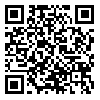Volume 41, Issue 1 (Journal of Advanced Materials-Spring 2022)
2022, 41(1): 97-111 |
Back to browse issues page
Download citation:
BibTeX | RIS | EndNote | Medlars | ProCite | Reference Manager | RefWorks
Send citation to:



BibTeX | RIS | EndNote | Medlars | ProCite | Reference Manager | RefWorks
Send citation to:
Harati F, Mousavizadeh S M, Jabbareh M A. EFFECT OF TOOL ROTATION RATE IN FRICTION STIR SPOT WELDING ON LIQUATION CRACKING OF AZ91 ALLOY. Journal of Advanced Materials in Engineering (Esteghlal) 2022; 41 (1) :97-111
URL: http://jame.iut.ac.ir/article-1-1186-en.html
URL: http://jame.iut.ac.ir/article-1-1186-en.html
Department of Materials and Polymer Engineering, Faculty of Engineering, Hakim Sabzevari University, Sabzevar, Iran , m.jabbareh@hsu.ac.ir
Abstract: (986 Views)
Cast AZ91 alloy is one of the most used magnesium alloys, which is sensitive to liquation in the fusion weld method,s and friction stir spot welding due to low eutectic temperature and the presence of the intermetallic compound in eutectic temperature. In this research, the liquation behavior of AZ91 alloy during friction stir spot welding was investigated. The process was carried out at two rotation speeds of 1000 and 2500 rpm and a dwell time of 1 second on the plate of AZ91 with a 10 mm thickness. Microstructural characterization was carried out using optical and scanning electron microscopes. The results showed that at low rotation speed (1000 rpm), mechanical grinding redistribution and dissolution of 𝛾-Mg17Al12 precipitates occurred. While at high rotation speed (2500 rpm), the predominant phenomenon was liquation. In this condition, the liquation initiated around the 𝛾 phase, and then the liquid re-solidified, leading to the typical eutectic structure instead of initial 𝛾 precipitates. Moreover, the liquation intensified by approaching the stirred zone. Also, the presence of liquid film along grain boundaries resulted in decreased grain boundary strength and liquation cracking.
Type of Study: Research |
Subject:
Welding and joining
Received: 2022/02/28 | Accepted: 2022/09/4 | Published: 2022/08/1
Received: 2022/02/28 | Accepted: 2022/09/4 | Published: 2022/08/1
Send email to the article author







